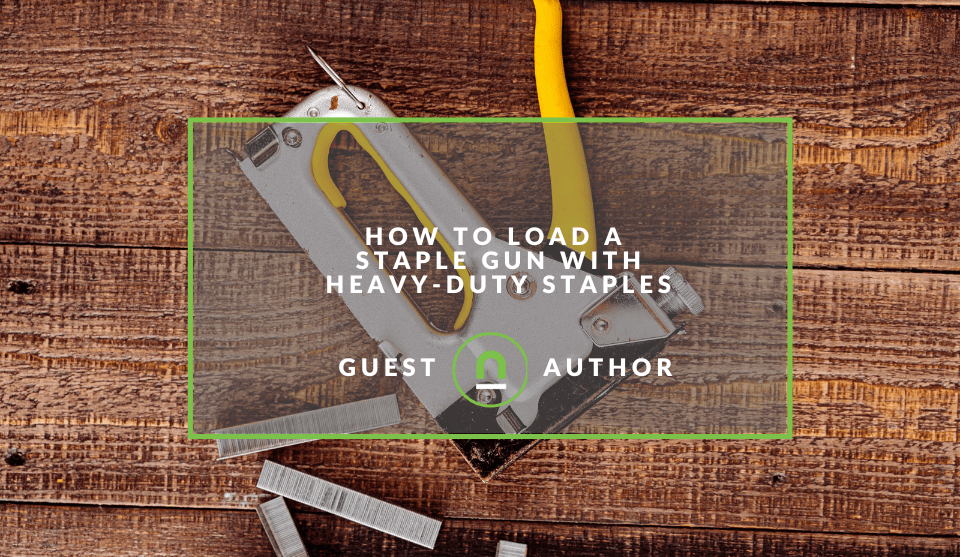Recent posts

Petrol heads
Tips For Buying A New Car In South Africa
30 September 2025

nichemarket Advice
19 FREE Business Directories In Mexico
27 September 2025

Press Releases
Hygiene Heroes Launches to Champion Cleaning Quality and Safety in South African Businesses
25 September 2025

Petrol heads
How to Choose the Best Auto Detail Shop Near You
11 September 2025
Popular posts
Extravaganza
Trending Music Hashtags To Get Your Posts Noticed
24 August 2018
Geek Chic
How To Fix iPhone/iPad Only Charging In Certain Positions
05 July 2020
Extravaganza
Trending Wedding Hashtags To Get Your Posts Noticed
18 September 2018
Money Talks
How To Find Coupons & Vouchers Online In South Africa
28 March 2019
How to Load a Staple Gun with Heavy-Duty Staples
27 August 2025 | 0 comments | Posted by Jonathan Simms in Constructive Criticism
Have you been experiencing immense difficulty while loading your staple gun with heavy-duty staples, compelling you to give up?
You are certainly not alone in going through this struggle. Yes, it may seem like an easy task, but if you don't know the correct method, the process becomes quite tricky.
So, to end your wrestling, this guide will teach you how to load your staple gun to continue doing your projects without irritation.
What Are Heavy-Duty Staples?
Heavy-duty staples are designed for applications that require more strength and durability than standard office staples. They are thicker and more robust, built to handle materials like large stacks of paper, cardboard, fabric, and even wood.
Here are the key characteristics that define heavy-duty staples:
- Wire Gauge: The gauge refers to the thickness of the staple's wire. In the wire gauge system, a lower number indicates a thicker wire. Heavy-duty staples typically have a thicker wire, often in the 15-16 gauge range, in contrast to the thinner wire (20-23 gauge) of standard office staples.
- Size and Leg Length: Heavy-duty staples come in a variety of sizes, often denoted by a two-number code like "23/13." The first number (23 in this case) indicates the wire gauge, and the second number (13) indicates the leg length in millimeters. A longer leg length is necessary to penetrate thicker materials.
Types of Heavy-Duty Staples:
- Office Heavy-Duty: These are used for binding large quantities of paper, often 50 to 200 sheets or more, and are identified by sizes such as the "23 series" (e.g., 23/8, 23/10, 23/13).
- Staple Gun Staples: These are used with staple guns for a variety of tasks like upholstery, insulation, roofing, and construction. Common types include T50 staples, which are known for their heavy-duty applications.
- Material: Heavy-duty staples are often made from strong materials like galvanised steel to resist rust and corrosion, ensuring a secure and long-lasting hold.
In essence, if a stapler is designed for demanding jobs beyond simple office paperwork, the staples it uses are considered heavy-duty.
Identify Your Staple Gun Type
What type of staple gun do you have? The two most common ones are:
Rear-loading
The rear model has a small button or latch at the back. When you press it, a metal rod pops out, where you load the staples back into the gun.
Bottom-loading
This has a latch on the bottom, usually near the front. When you remove the latch, the staple tray slips below, for you to load staples into the tray.
You need to identify the type of gun you have at your end. Don't force the staples into a gun that has a different loading mechanism.
Loading a Bottom-Loading Staple Gun
Once you have the correct staples, it's time to load them up.
Find the Latch
Find the latch on the bottom of your staple gun, near the nose.
Open the Staple Tray
Press the latch and the staple tray to open on a hinge.
Insert the Staples
Take the strip of staples and insert the strip of staples with the pointed ends facing down.
Close the Tray
Firmly close the tray and ensure it clicks into place.
Loading a Rear-Loading Staple Gun
Locate the Latch
In the rear-loading gun, the latch is at the very back of the gun's handle.
Release the Pusher Rod
Now press the button and hold it as the pusher rod will come out. It's a long, thin metal piece that slides out of the back. Some versions will spring out themselves.
Insert the Staples
To insert the staples, turn the gun upside down. Take your heavy-duty staples strip and insert it into the channel. Just see, they are flush against the sides.
Reinsert the Pusher Rod
Reinsert the pusher rod into the channel, pushing it until you hear the clicking sound. This rod puts pressure on the staples, settling one by one, giving you a gun that is ready to use.
If you want heavy-duty staples, then grab some from Gelmar. They have a wide range of such staples.
What Can You Do With A Staple Gun?
A staple gun, also known as a staple tacker, is a versatile and powerful tool used to drive heavy metal staples into a variety of materials with much more force than a standard office stapler.
The applications for a staple gun are extensive and range from professional construction and crafting to common household repairs.
Here are some of the most common uses for a staple gun:
Upholstery and Fabric Work:
This is one of the most popular uses for a staple gun. It's an essential tool for reupholstering furniture, securing fabric to wooden frames, and creating custom headboards or cushions.
Construction and Carpentry:
Staple guns are used for fastening materials in a wide range of construction and woodworking projects.
This includes:
- Securing insulation to walls or ceilings.
- Attaching house wrap and vapor barriers.
- Installing roofing felt and underlayments.
- Light carpentry tasks like attaching plywood sheets or trim.
- Fixing wiring and cables to surfaces.
DIY and Craft Projects:
For hobbyists and crafters, a staple gun can be a game-changer. It's great for:
- Making and repairing picture frames.
- Assembling canvases for painting.
- Creating various home decor items with fabric, cardboard, or thin wood.
Flooring and Carpet Installation:
Staple guns are used to secure carpet to subfloors or stairs, providing a quick and efficient method for installation.
Fencing and Netting:
They are also used outdoors for securing wire fencing, chicken wire, or mesh to wooden posts.
Packaging:
While tape is common, a heavy-duty staple gun can be used to securely close cardboard boxes, especially for heavy or bulky items.
The type of staple gun—manual, electric, or pneumatic—will determine the kind of jobs it's best suited for. Manual staple guns are affordable and great for light- to medium-duty tasks, while electric and pneumatic models provide more power and are ideal for repetitive, heavy-duty work with tougher materials like hardwood
Frequently Asked Questions
- How do I know which staples to buy?
Always check the staple gun itself for a label or a stamp indicating the correct staple type.
My staple gun is loaded, but no staples are coming out. What's wrong? The most likely issue is that the pusher rod isn't fully engaged.
- Why are my staples not holding securely?
Ensure you're using the correct staple type and size for the material. Also, adjust the staple depth setting to ensure proper penetration.
- What should I do if my staples aren't penetrating the material?
Check if you're using the right size and type of staples for the material thickness. Adjust the staple depth setting if necessary.
- Why does my staple gun keep jamming?
Clear any jammed staples by following the manufacturer's instructions. Check for damaged or bent staples that might be causing the jam. Ensure the staple gun is lubricated if needed.
- What causes staples to bend or break during use?
Check the staple material and use high-quality staples to prevent bending. Adjust the staple depth setting to avoid excessive force.
Tell us your story
Would you like to write for nichemarket just like Jonathan has? Find out how to submit a guest post, and when you're ready, you can contact us.
Are you looking to promote your business?
Construction or renovation businesses can create their own free business listing on nichemarket. The more information you provide about your business, the easier it will be for your customers to find you online.
Registering with nichemarket is easy; all you will need to do is head over to our sign-up form and follow the instructions. If you require a more detailed guide on how to create your profile or your listing, then we highly recommend you check out the following articles.
Recommended reading
If you enjoyed this post and have time to spare, why not check out these related posts and dive deeper down the rabbit hole that is decor and interior design.
- How To Prepare For A Home Renovation
- How To Create The Ideal Kitchen
- Romantic Home Decor Ideas for Newlyweds
- Decoration Tips For The Office Party
- Turn Your Tiny Balcony Into an Outdoor Paradise
- 9 Ways to Make Your Bathroom Look Modern
- How To Make a Bright Atmosphere at Home
- How to Craft the Ideal Beach House Kitchen
- Exploring Eco-Friendly Materials for Laser Cutting Projects
Tags: DIY, Guest Post
You might also like
The Benefits of Aeromedical Evacuation Solutions
09 September 2025
Posted by Joshua Byrne in Doctors Orders
Learn about the benefits of an aeromedical evacuation solution for your remote worksite — 24/7 coordination, ICU-level care in transit, and case mana...
Read more{{comment.sUserName}}
{{comment.iDayLastEdit}} day ago
{{comment.iDayLastEdit}} days ago
 {{blogcategory.sCategoryName}}
{{blogcategory.sCategoryName}}

